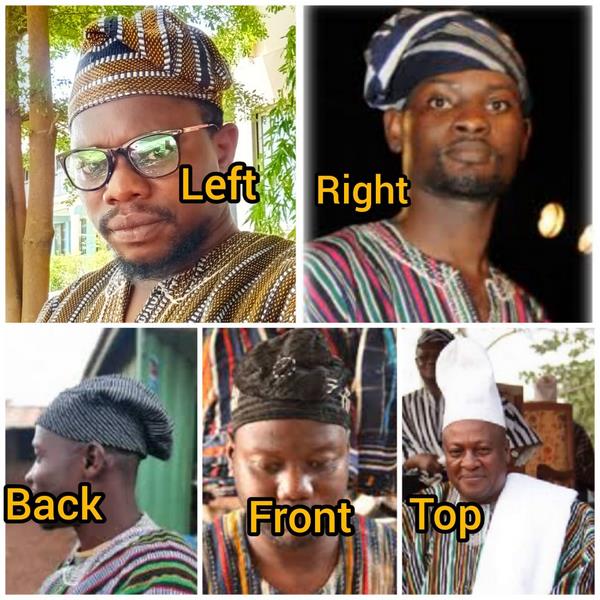
Many individuals don their traditional regalia, such as the “fugu” or “Dasika-Nankane/Grurune” smock, along with a distinctive hat during festivals or grand durbars in celebration.
Wearing the smock hat carries significant symbolism, especially among Northern communities like the Fafra or Gurusis.
It is crucial to understand the proper way to wear the hat to avoid misunderstandings or appearing arrogant.
Symbolic gestures are highly valued in these cultures, and the manner in which the hat is folded conveys messages about the wearer.
Here’s an interpretation of the various folding styles:
Folded to the Left: Folding the top of the hat to the left signifies humility. It communicates that the person is peace-loving, humble, and seeks no trouble. This gesture does not imply weakness, poverty, or incapability; rather, it conveys a desire for harmony.
Folded to the Right: Folding the hat to the right suggests wealth or influence in the community. However, it’s important to note that individuals may adjust the fold to the left when approaching a gathering of higher-ranking individuals. Leaving the hat folded to the right in the presence of community leaders, especially the chief, may be seen as disrespectful and could lead to consequences such as a fine.
Folded Backwards: Folding the hat backward indicates that the wearer aspires to be a leader with a significant following in the future. This style reflects a sense of ambition and leadership potential.
Folded to the Front: If the top of the hat is folded to the front, it signifies that the wearer considers themselves unparalleled or without equals in the town or gathering. This style is often adopted by affluent individuals, chiefs, and those who believe in their spiritual fortification.
Upright Hat: When the apex of the hat is upright, it symbolizes great power, indicating that the wearer holds the highest status in the community or gathering. This style is typically reserved for chiefs or individuals with high spiritual fortitude.
Understanding and respecting these symbolic gestures in hat-wearing is essential to avoid unintentional conflicts or misunderstandings in these culturally rich communities.
Cecilia Marfo names Black Sherif as her favourite secular musician
Prophetess, daughters arrested for abusing member for questioning their beliefs
Gospel musician Selassie Brown ‘clashes’ with Sally Mann over Cecilia Marfo

